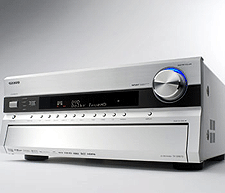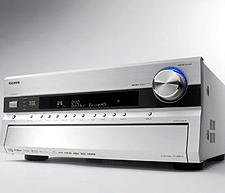


In the old days a "receiver" was roughly defined as an AV component that included a preamp, an internal power amp and some form of AM/FM tuner all in one chassis. While integrated amps (a preamp and amp all in one unit without the tuner) were a little more respected in the audiophile community - many of us got our first start at high performance audio via a receiver of some sort. My first receiver was an NAD that ultimately was used as a make-shift audiophile preamp as my system grew when I was a teenager in prep school back in Philadelphia. Since those days, the receiver has transformed into a completely different beast today.
Ask any male Baby Boomer where he grew up and which FM radio station he listened to and you will nearly always get an enthusiastic response. In the late 1960's and early 1970's my father was the program director for the two coolest AM and FM rock-pop stations in the Philadelphia market - WIFL and WIBG. Many people his age still think back fondly to listening to all of the incredible music of the day from Jimi Hendrix to The Beatles to Motown to Aerosmith, Led Zeppelin and so much more. This music was broadcast free of charge and wirelessly. Via terrestrial FM radio hundreds of Americans got a viable source for music (albeit not a very high resolution one) especially new music that was incredibly culturally relevant. In Europe during the same period, FM radio programming was even better than in the United States with great shows, live programming and arguably better audio which all resulted in an even more loyal following for FM radio than in the States. Globally by the 1970s FM radio content was a must-have in any mainstream or even performance based audio system thus the generation-long love affair with the AV receiver.
With the meteoric rise in popularity in home theater in the very late 1970's paired with the success of Dolby surround sound and the VHS tape recorder - AV receivers added even more functionality including surround sound processing, video switching and more. As AV systems became more digital they now switched, processed and dealt with more and more sophisticated sources while still always remaining faithful to their AM/FM roots. AV receivers evolved and consumers ate up the new feature sets while upgrading their systems year after year.
Roll the tape forward to 1996 and the deregulation of terrestrial radio in the United States - we saw American radio boom right along with the dotcom companies that were so popular in the day. And like so-many of their dotcom brethren - radio consolidators have busted like a degenerate gambler on the worst of Las Vegas binges. Stocks of once mighty radio companies are now worth mere pennies a share - with many reportedly close to bankruptcy today. Radio stations that once sold for 16 times "top line" one-year revenue can barely sell for one-time yearly revenue. Howard Stern, the backbone of the FM talk dynasty at CBS-Infinity, is now the strongest draw at pay-satellite radio provider at Sirius-XM satellite radio. As an industry, many radio programming critics argue that there hasn't been a meaningful new terrestrial radio format since "Arrow" (which was really a 1970's rock oldies format) in over 25 years. Terrestrial radio once one of the most mighty of mainstream medias just a decade or two ago - is today deader than a doornail.
With radio solidly festering in the proverbial new media shitcan - today AV receivers are asked to do more and more hard work. Switching HDCP copy protected HDMI signals is no small technical feat. Processing HD audio codecs from Blu-ray discs like Dolby TrueHD and DTS Master Audio are even more intense yet this doesn't even cover the scope of today's AV receivers. Increasingly, today's under-$1,000 receivers are adding satellite radio as an included feature. Now these same receivers are becoming network devices that speak to other computers, hard drives, cell phones and other devices throughout the home via wireless protocols as well as connections such as Bluetooth.
Today, AV receivers have transcended their traditional role and for most American AV consumers represent the hearth and soul of your home entertainment system as it increasingly is fed "on-demand" "pay-per-view" and HD downloaded content while being controlled by the likes of an Apple iPod touch via wireless or Bluetooth connection.
The radio industry thinks they have a comeback in them. They are dead wrong. Radio and the music business executives are quick to blame Napster and other peer-to-peer file sharing systems for their troubles yet ask any Howard Stern fan how much better the show is (even paying $12 per month) without the 14 minute commercial sets twice an hour. The music industry's long and nasty divorce with FM radio has forced music enthusiasts and today's youth to other media to find new places and formats to buy new music. No company has benefited from this phenomenon more from this than Apple Computer who today can wirelessly connect every media file you have in your house (even some 720p HD files) to your home theaters, HDTVs and other locations with the ultimate level of ease of use that only Apple can deliver.
Considering the fact that I have never actually over from satellite to the FM radio in my car for the two years that I have owned it - I ask the question: with all of the processing power needed to manage today's complex home theater systems - is it time to consider leaving AM-FM tuners out of next generation AV receivers? Clearly receivers "receive" a lot more than analog terrestrial radio. Do consumers really care if you get your local FM station in your next receiver assuming you might have access to say 1,000 plus Internet Radio stations instead for the same money. Even if you must still have your AM and FM in your system - there is no question the definition of what an AV receiver is today has changed radically even in the last year.